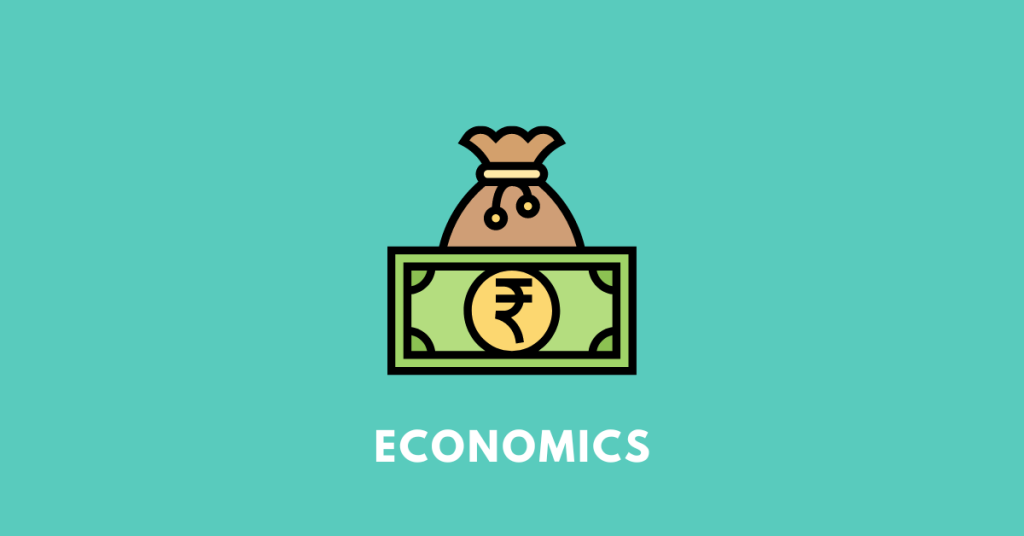Get summaries, questions, answers, solutions, notes, extras, PDF and guide of Class 11 (first year) Economics textbook, chapter 1 , which is part of the syllabus of students studying under AHSEC/ASSEB (Assam Board). These solutions, however, should only be treated as references and can be modified/changed.
Select your chapter
| INTRODUCTORY MICROECONOMICS |
| Chapter 1: Introduction |
| Chapter 2: Consumer’s Equilibrium |
| Chapter 3: Theory of Demand |
| Chapter 4: Elasticity of Demand |
| Chapter 5: Production Function |
| Chapter 6: Concepts of Costs |
| Chapter 7: Concepts of Revenue |
| Chapter 8: Producer’s Equilibrium |
| Chapter 9: Theory of Supply |
| Chapter 10: Forms of Markets |
| Chapter 11: Price Determination Under Perfect Competition |
| ECONOMIC STATISTICS |
| Chapter 1: Introduction |
| Chapter 2: Collection of Data |
| Chapter 3: Organisation of Data |
| Chapter 4: Tabulation |
| Chapter 5: Diagrammatic Presentation |
| Chapter 6: Graphic Presentation |
| Chapter 7: Measures of Central Tendency |
| Chapter 8: Measures of Dispersion |
| Chapter 9: Correlation |
| Chapter 10: Index Numbers |
AHSEC Class 11 Economics textbook
The Assam Higher Secondary Education Council (AHSEC)/Assam State Board of Secondary Education (ASSEB) have structured the Class 11 Economics curriculum into two primary segments: Introductory Microeconomics and Statistics for Economics. This comprehensive textbook aims to provide students with a solid foundation in both economic theory and statistical tools, essential for understanding and analysing economic issues.
The textbook begins by defining the economy and addressing central economic problems such as what to produce, how to produce, and for whom to produce. It introduces key concepts like the production possibility frontier and opportunity cost. The section on consumer equilibrium and demand discusses the concepts of utility, marginal utility, and the law of diminishing marginal utility. It covers consumer equilibrium using both marginal and indifference curve analysis, and explores demand, determinants of demand, demand schedule, and elasticity of demand. The producer behaviour and supply section explores the production function, returns to factor, and various cost concepts. It examines revenue types and the conditions for producer equilibrium, and further delves into supply, market supply, and price elasticity of supply. Different market structures, including perfect competition, monopoly, monopolistic competition, and oligopoly, are examined in the market and price determination section. This section discusses market equilibrium and the determination of equilibrium prices under perfect competition.
The Statistics for Economics segment introduces the meaning, scope, and importance of statistics in economics, setting the stage for understanding how to collect, organise, and interpret economic data. It covers methods of data collection, both primary and secondary sources, and techniques for organising data. Various forms of data presentation, including tabular, diagrammatic, and graphical methods, are discussed. A detailed look is provided at measures of central tendency (mean, median, mode) and measures of dispersion (range, quartile deviation, mean deviation, standard deviation). This segment also covers correlation, index numbers, and their applications in economic analysis.
The textbook includes a section on project work, encouraging students to apply their knowledge in practical settings. Projects may involve primary and secondary data collection, analysis, and interpretation using statistical tools learned in the course.
The AHSEC/ASSEB Class 11 Economics textbook is designed to equip students with essential knowledge in microeconomics and statistical analysis. Through a blend of theoretical concepts and practical applications, students are prepared to analyse economic problems and make informed decisions. This foundational course serves as a crucial stepping stone for further studies in economics and related fields.

Get notes of other boards, classes, and subjects

Please provide the notes of class 11 economics statistics notes at the earliest. Thank you.